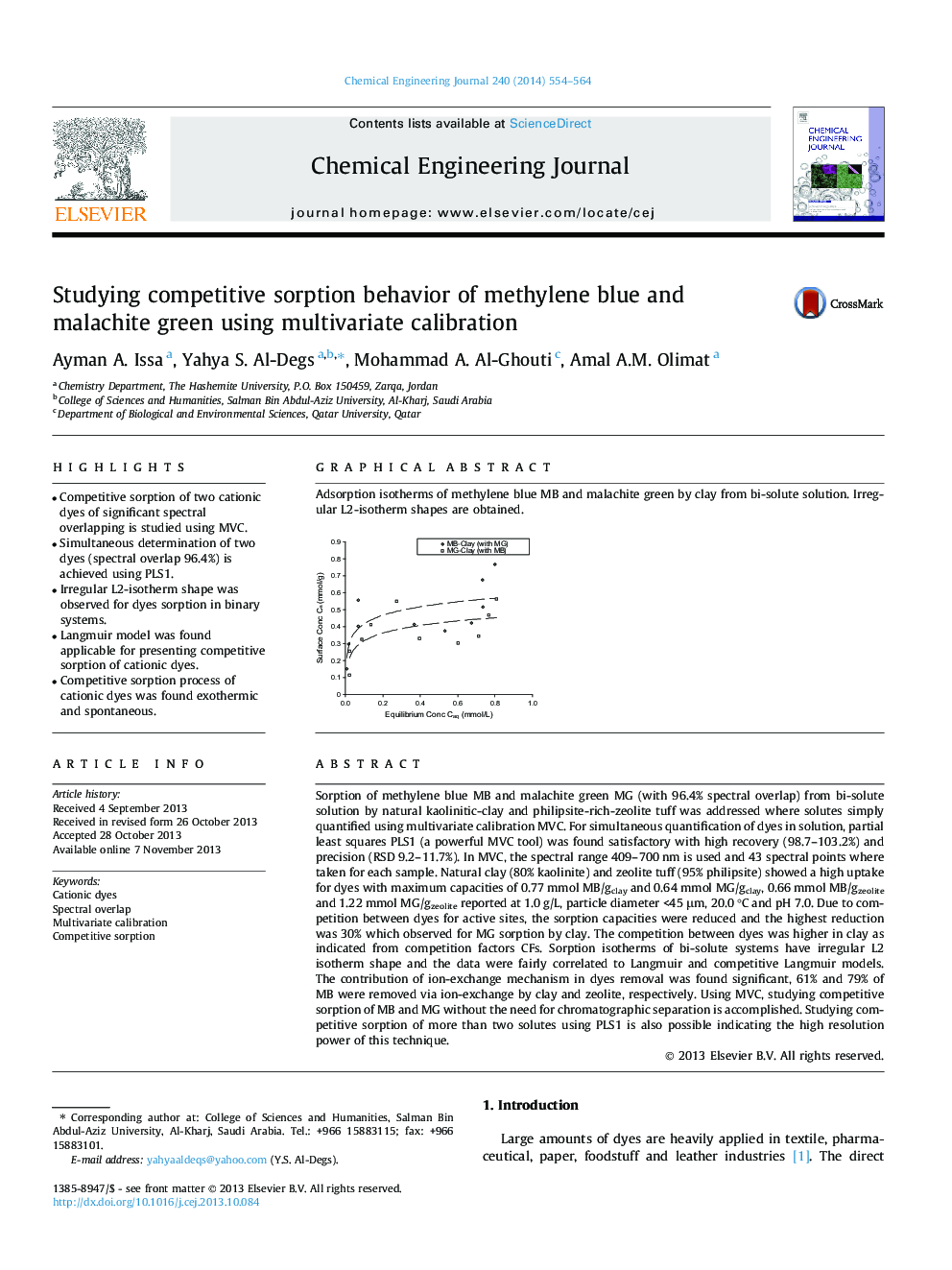| کد مقاله | کد نشریه | سال انتشار | مقاله انگلیسی | نسخه تمام متن |
|---|---|---|---|---|
| 147704 | 456398 | 2014 | 11 صفحه PDF | دانلود رایگان |
• Competitive sorption of two cationic dyes of significant spectral overlapping is studied using MVC.
• Simultaneous determination of two dyes (spectral overlap 96.4%) is achieved using PLS1.
• Irregular L2-isotherm shape was observed for dyes sorption in binary systems.
• Langmuir model was found applicable for presenting competitive sorption of cationic dyes.
• Competitive sorption process of cationic dyes was found exothermic and spontaneous.
Sorption of methylene blue MB and malachite green MG (with 96.4% spectral overlap) from bi-solute solution by natural kaolinitic-clay and philipsite-rich-zeolite tuff was addressed where solutes simply quantified using multivariate calibration MVC. For simultaneous quantification of dyes in solution, partial least squares PLS1 (a powerful MVC tool) was found satisfactory with high recovery (98.7–103.2%) and precision (RSD 9.2–11.7%). In MVC, the spectral range 409–700 nm is used and 43 spectral points where taken for each sample. Natural clay (80% kaolinite) and zeolite tuff (95% philipsite) showed a high uptake for dyes with maximum capacities of 0.77 mmol MB/gclay and 0.64 mmol MG/gclay, 0.66 mmol MB/gzeolite and 1.22 mmol MG/gzeolite reported at 1.0 g/L, particle diameter <45 μm, 20.0 °C and pH 7.0. Due to competition between dyes for active sites, the sorption capacities were reduced and the highest reduction was 30% which observed for MG sorption by clay. The competition between dyes was higher in clay as indicated from competition factors CFs. Sorption isotherms of bi-solute systems have irregular L2 isotherm shape and the data were fairly correlated to Langmuir and competitive Langmuir models. The contribution of ion-exchange mechanism in dyes removal was found significant, 61% and 79% of MB were removed via ion-exchange by clay and zeolite, respectively. Using MVC, studying competitive sorption of MB and MG without the need for chromatographic separation is accomplished. Studying competitive sorption of more than two solutes using PLS1 is also possible indicating the high resolution power of this technique.
Adsorption isotherms of methylene blue MB and malachite green by clay from bi-solute solution. Irregular L2-isotherm shapes are obtained.Figure optionsDownload as PowerPoint slide
Journal: Chemical Engineering Journal - Volume 240, 15 March 2014, Pages 554–564
